
Original Link: https://www.anandtech.com/show/1453
High End Buyer's Guide - September 2004
by Wesley Fink on August 30, 2004 12:22 AM EST- Posted in
- Guides
High End is not without price limits, but price is much less a consideration than performance. If High-End means anything for the enthusiast who reads AnandTech, then you can spend a bit more for performance that is really better. With this in mind, the scales tip toward top performance in the High-End choices. Mid-range is where you sweat nickels and measure every component for bang for the buck. For High End, you pick the best.
As in past Guides, we offer a recommendation for every component that goes into a computer. Our recommendation is our First Choice and we will try to explain why we chose that component. For some components, we will also offer an alternative on that type of hardware. We've added alternative hardware picks to our guides because it allows AnandTech to recommend a wider variety of hardware. This is especially true for those willing to spend a little more or to recommend a cheaper component that is of outstanding value. Alternative picks provide you other choices, which, in some cases, will be better suited for your needs, and in other cases, will not be.
Most of the prices listed for the hardware that we recommend can be found in our RealTime pricing engine. Any prices not found in our engine can be found on pricewatch. Relevant parts of our RealTime pricing engine are listed at the bottom of every page of our Buyer's Guides so that you can choose the lowest prices from a large variety of vendors.
We are always taking suggestions on how to improve our Buyer's Guides, and the changes you are seeing here are the result of suggestions from our readers and Editors. Since we are adding 2 new guides to AnandTech, email your suggestions for new guides to Evan Lieb. Considerations include a Buyer's Guide for SFF (Small Form Factor systems), Gaming System, and Laptop/DTP (Desk-Top Replacement). If you have other suggestions, let us know; the Guides are to help you with your buying decisions.
High End
A High End system should represent the best performance, features, and flexibility that you can buy for a given need. In this case, the given need is defined as a Desktop Computer System built from the best performing computer components that you can actually buy. This differs from other Buyer's Guides, which concentrate on value first. With the extensive testing done at AnandTech by many different Editors, we have personally tested many of these components, and you will see our Editor's Choice components appear frequently in the Buyer's Guides.With performance as the most important consideration in a high-end system, reliability becomes the second most important consideration. Truthfully, reliability is just as important in most cases as performance, since it does no good to put together an expensive high-end system that you cannot enjoy due to reliability issues. By definition, price is a distant third consideration, but price is not the same as value. Value is always a consideration in our buying guides because we refuse to recommend high-priced components that provide little or no performance advantage over lower priced components. A component that costs 250% more for a 5% increase in performance is not a good value and does not even belong in a high end system.
Anyone who is considering building a top-of-the-line system is quickly faced with the reality that the best performing parts aren't usually going to be the cheapest parts. On the other hand, the value and performance that you get for your dollars in today's computer market are the best in many years in the computer industry. There was a time when the best desktop systems were much more than $10,000; while today, you are hard pressed to spend more than $5,000 on a top-performing system. In most cases, the best performance can be had even less. With this in mind, our only restriction is that our high-end system will cost under $5,000.
CPU and Motherboard Recommendations
CPU: AMD Athlon 64 FX53 1MB L2 cache (2.4GHz) - SOCKET 939Motherboard: MSI K8N Neo2 Platinum - SOCKET 939
Price: CPU - $829 shipped (retail heatsink and fan). Motherboard - $145 shipped
For those looking for the best performance possible, it would be tough to recommend anything other than the Athlon 64 FX53. The Athlon 64 is currently the fastest processor that you can buy, the Dual-Channel Socket 939 is the top-performing A64 Socket, and the FX is the fastest 939 processor. The FX also has the distinction of being the only processor that is completely unlocked. That means that you can adjust multipliers both up and down, to obtain the highest possible speed at the fastest DDR400 memory timings, or to obtain the highest FSB that your high speed memory can run or your CPU can reach
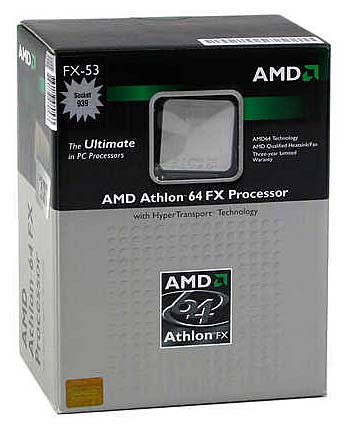
With Intel's recent introduction of Socket 775 came a new 560 Pentium 4, which runs at 3.6GHz. While the 560 is closer in performance than the previous 3.4GHz P4 or the 3.4EE, the FX53 is still the top-performing CPU. In addition, all current Pentium 4 processors can only run 32-bit code, so AMD's Athlon 64 is unique because it can run 32-bit code as well or better than the top competition in addition to 64-bit code for the future. All-in-all, the FX53 represents a good choice if you are building a high-end system, whether in the newest Socket 939 or the older Socket 940.
We chose Socket 939 for the future, since this appears to be AMD's primary socket moving forward. Socket 939 also has the added feature of being able to use any of a very wide selection of commonly available unbuffered DDR memory instead of the harder to find and more expensive registered DDR required by Socket 940 motherboards. You will get almost identical performance at almost the same cost with the Asus SK8V motherboard, the socket 940 FX53, and OCZ DDR433 Registered DDR memory. These selections are proven performers and are only very slightly slower than the Socket 939 in any benchmark.
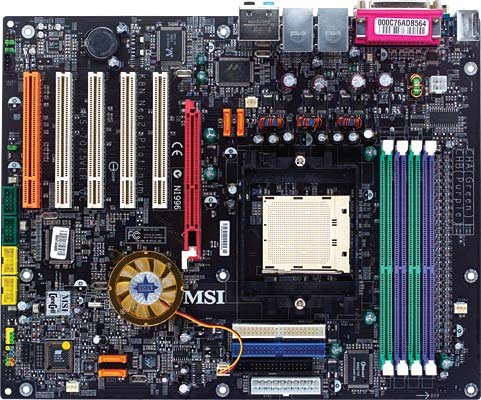
While they are just beginning to appear in the retail channel (finally!), the MSI K8N Neo2 Platinum stood out in our recent Socket 939 roundup as a top performer and earned the AnandTech Gold Editor's Choice. Perhaps even more important for performance, the K8N Neo2 was the only board in the 939 roundup to match and actually edge ahead of the standout memory performance of the legendary Asus P4C800-E in our overclock tests. The K8N Neo2 actually reached a Clock Frequency of 290 (DDR580) with fast DDR550 memory that we used in our overclock tests. Wherever you can take the FX53, the K8N Neo2 will go - to the limits of your CPU or memory.
When the day is done, the K8N Neo2 will continue to impress with a full implementation of the features of the nForce3-250Gb/Ultra including fast on-chip LAN, any-drive RAID that allows IDE and SATA hard drives to be combined in RAID arrays, and an on-chip Firewall. The feature set compares well to any premium Socket 939 on the market and will not disappoint. You can count on a working AGP/PCI lock with adjustments from 66 to 100, CPU multipliers from 4X to 20X, HyperTransport adjustments from 1GHz to 200MHz (5x-1x), and CPU frequencies from 200 - 300. You also get a full range of voltage adjustments - vCore to 1.85V, memory voltage to 2.85V, and vAGP to 1.85V. This is even a board for the beginning overclocker, since there are automatic overclocking selections in Core Cell that set everything for you. You just choose the % overclock from 1% to 11% and the board does the rest.
The MSI provides everything that you would expect in a high-end motherboard for the Athlon 64. Memory up to 4GB is supported in Dual-Channel mode. Support is also included for up to 8 USB devices and 3 Firewire devices. There is also a second Gigabit LAN port for added flexibility. On-Board audio is provided by the latest Realtek 7.1 ALC850 with SPDIF I/O.
We have never tested a perfect board, and as much as we like the K8N Neo2, there are still areas for improvement. MSI has answered one suggestion by providing an improved CPU frequency range to 350 in the latest 1.1 BIOS. Another improvement MSI could make is to provide finer adjustments for CPU ratios, providing 0.5X ratios like some of the competing boards. Last, there is no real voltage adjustment for HT or chipset voltage, and that would add to the flexibility. However, in the end, it's hard to complain about a board that does so much so well. The MSI is a great board to house the FX53 for the High-End system.
Listed below is part of our RealTime pricing engine, which lists the lowest prices available on the AMD CPUs and motherboards from many different reputable vendors:
If you cannot find the lowest prices on the products that we've recommended on this page, it's because we don't list some of them in our RealTime pricing engine. Until we do, we suggest that you do an independent search online at the various vendors' web sites. Just pick and choose where you want to buy your products by looking for a vendor located under the "Vendor" heading.
CPU and Motherboard Alternatives
CPU: Intel Pentium 4 560 (3.6Ghz)Motherboard: Asus P5AD2 Premium (Intel 925X)
Price: CPU - $505 shipped (Retail with HSF). Motherboard - $264 shipped
It was difficult to decide between the Single-Channel Socket 754 Athlon 64 and the new Intel Socket 775 for the High-End alternative. Despite the massive increase in memory bandwidth that comes with the Dual-Channel 939, the fact remains that the Athlon 64 is not particularly bandwidth-starved compared to recent deep-pipe Intel designs. As you can see in the launch article on Socket 939, this translates into performance of the single-channel 754 Athlon 64 that is only 2% to 9% slower than the new 939 at the same speed. In real terms, this means that a Socket 754 combined with a second-generation Socket 754 motherboard with AGP/PCI locks is still slightly outperforming Intel's latest and greatest Pentium 4 560 (3.6GHz). The new pricing of the 2.4GHz 3700+ at about $525 also makes this tempting for the High-End Value shopper. The 754 is still a very good alternative, but in the end, the new Socket 775 on one of the motherboards that solves the Intel OC lock riddle won out as the High-End alternative due to the combination of features and future.
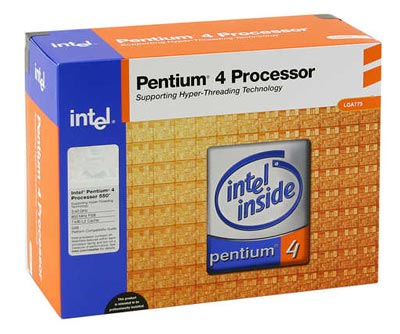
Intel produces processors with locked multipliers, so for raw performance, we chose the highest Intel stock speed. The Intel 560, running at 3.6GHz and based on the 90nm Prescott core, is the fastest Intel CPU you can buy today. As Anand found in the Socket 775 launch review CPU benchmarks, the 560 is generally faster than the more expensive 3.4EE, which has double the cache, but is based on the 130nm Northwood core. Most Socket 775 processors that we have tested tend to top out in the 3.8GHz to 4.0GHz range with modest voltage increases, so overclockers choosing a 775 CPU may want to choose a slower 775, like the 3.2GHz to balance ultimate overclock with board Clock frequency capabilities.
In this case, the Asus P5AD2 tops out at 278 with ATI PCIe video or about 260 with nVidia PCIe. We also showed, in our DDR2 memory roundup, that all current DDR2 memory could run at DDR2 667, which is achieved at a Clock frequency of 250. This means that if you are an experienced overclocker, you can achieve the same or higher performance with a 3.2E Socket 775 matched to the Asus P5AD2.
However, this is the High-End Buyer's Guide and there is no doubt that overall, the 560 is the fastest stock Intel Socket T processor that you can buy. This makes the 560 the ideal choice for a Socket T, PCI Express, DDR2 High-End system.
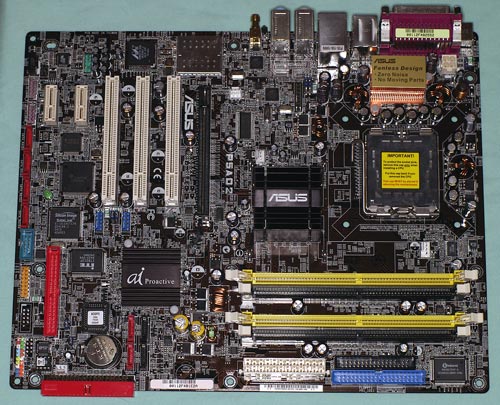
The Intel 925X chipset is Intel's Enthusiast chipset, and we recently compared 925X motherboards in our 925X Roundup. The Gold Editor's Choice in that roundup was the Asus P5AD2, which makes the Asus the logical choice for our High-End Intel system.
The P5AD2 Premium is clearly top-of-the-line in every way. All of the Asus Proactive AI (Artificial Intelligence) features are included, and Asus proudly advertises the overclocking features of the P5AD2 Premium. This includes a special cooling plate on the bottom of the board in the CPU area that Asus calls Stack Cool.
Asus includes Dual Gigabit PCI Express LAN on the P5AD2, with both LAN ports powered by the new Marvel 88E8053 Ethernet controllers. You will also find a complete WiFi set-up with an 802.11g card and antenna included for the WiFi slot. Asus uses the premium C-Media CMI9880 codec supporting the Intel High-Definition audio, with 8 channels and Dolby Digital Live technology support. The P5AD2 also adds the DDR2 memory option of 600MHz at stock speed in addition to the common 533 and 400 options.
The storage area is one area where the Asus stands out compared to other 925X boards. All 925X support the ICH6R standard 4 SATA/1 IDE (2drives) configuration. The Asus adds 4 more SATA ports for a total of 8 SATA ports, and also adds an ITE controller for 2 more IDE devices for a total of 4.
When Socket 775 was launched, it did not appear that any of the new 925X/915 motherboards would ever become a recommended performance motherboard. Performance was fine if you looked only at stock speeds, but the 925x/915 boards appeared limited to about a 10% overclock by design. This severely limited performance at the very top compared to Intel 875/865 chipset boards. However, the P5AD2 has turned out to be the best overclocker that we have seen so far among the 925X motherboards. In our tests, the Asus reached 278 FSB with the difficult combination of a top-end ATI X800 XT PCIe video card and a SATA hard drive. This puts the P5AD2 in the same performance ballpark as the best 875 boards, making it easier to choose a 925X system as the high end alternative system.
The P5AD2 is an expensive motherboard, but it will take 775 performance to places that are difficult to reach with other 925X motherboards. It was designed from the start to be a dream board for Performance computing, and Asus even provides a full range of AI overclock options for the more timid, with auto presets from 5% to 30% overclock, which represent a range of auto overclocks to FSB1066/DDR2-710.
There is also a full range of both familiar and new manual settings for overclockers who like to dial their own.
Listed below is part of our RealTime pricing engine, which lists the lowest prices available on the Intel CPUs and motherboards from many different reputable vendors:
If you cannot find the lowest prices on the products that we've recommended on this page, it's because we don't list some of them in our RealTime pricing engine. Until we do, we suggest that you do an independent search online at the various vendors' web sites. Just pick and choose where you want to buy your products by looking for a vendor located under the "Vendor" heading.
DDR Memory
DDR Recommendation: 1GB Kit (2 X 512MB) Crucial Ballistix PC3200Price: $278 shipped
One of the advantages of the new AMD Socket 939 is that it uses regular unbuffered dual-channel memory. This means that almost any memory will fit your new Socket 939 system. Any of the new DDR400 2-2-2 memories will work fine on the Intel 875/865 platform, but we have found that some memory performs much better in Athlon 64 systems than others. The overall best Athlon 64 performance that we have found was with Crucial Ballistix PC3200, and our alternative OCZ 3700EB/3500EB. These two memories perform just as well on Intel DDR systems, but they stand alone in performing the same on the pickier Athlon 64 Socket 939 boards.
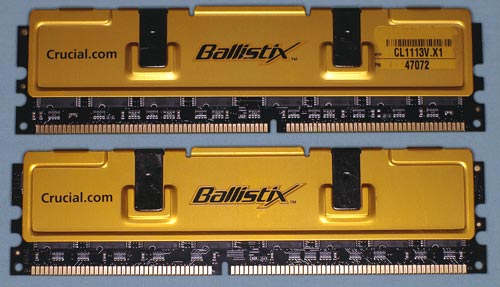
When Corsair 3200XL roared on the scene in May with a return of 2-2-2 timings to DDR400, we had no idea it was just the start of DDR400 2-2-2 from all the major memory makers. As you saw in our roundup of the new 2-2-2 memories, all of the new DDR400 2-2-2 performed well on the Intel test bed and all but one used Samsung memory chips. The exception was Crucial Ballistix, which used Micron memory chips and earned our Gold Editors Choice for best performance. Ballistix was also the only 2-2-2 memory tested in the roundup that performed just as well on Athlon 64 as it did on Intel, so it is a great match to the MSI K8N Neo2.
Crucial Ballistix also extends performance all the way to DDR500, with our test memory achieving the fastest timings that we have tested so far at DDR500. This will give you incredible headroom when you select this memory for your system.
Crucial is the well-respected retail division of memory-chip manufacturer Micron, and Crucial has earned regard from customers over years of providing quality memory products and excellent Customer Service. You will also find the Crucial Ballistix PC3200 an excellent value among DDR400 2-2-2 memory products.
DDR Alternative: 1GB Kit (2 X 512MB) OCZ PC3700 EB
Price: $325 shipped
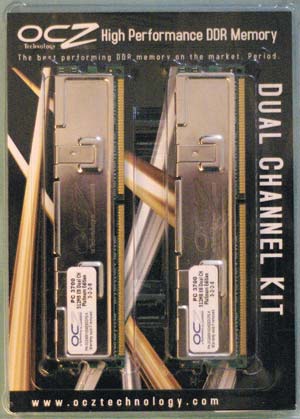
OCZ 3700EB, and the similar 3500EB, are also based on Micron memory chips, which appear to be a better match to the Socket 939 than other memory chips that we have tested. The EB takes a little different approach to memory timings, and runs at 2.5-2-2 at DDR 400. This is still competitive with the best memory available, but by DDR433 to DDR450, the EB becomes one of the fastest memories we have tested at that speed. Performance extends well beyond DDR500 and the performance at DR500 is one of the best that we have tested. Many Athlon 64 boards are picky about memory, but every Athlon 64 board that we have tested so far seems quite content with either 3700EB or 3500EB memory.
End users are reporting very consistent results with overclocking OCZ 3700EB. For that reason, we consider the choice between Crucial Ballistix and OCZ EB a toss-up. Ballistix is better at DDR400, but EB is reliable in consistently reaching high overclocks on the MSI K8N Neo2.
OCZ has raised their Customer Service standards to among the best in the memory industry in the past year. We often get emails reporting very positive Customer Service and quick problem resolution when customers have contacted OCZ directly. OCZ combines that excellent Customer Service with a Lifetime Warranty.
Either of these DDR recommendations will work very well on the MSI K8N Neo2, Asus P4C800-E Deluxe, or DFI NFII Ultra Infinity. However, DDR2 memory is required for the Asus P5AD2 Premium.
Listed below is part of our RealTime pricing engine, which lists the lowest prices available on memory from many different reputable vendors:
If you cannot find the lowest prices on the products that we've recommended on this page, it's because we don't list some of them in our RealTime pricing engine. Until we do, we suggest that you do an independent search online at the various vendors' web sites. Just pick and choose where you want to buy your products by looking for a vendor located under the "Vendor" heading.
DDR2 Memory
DDR2 Recommendation: 1GB Kit (2 X 512MB) Crucial PC2-4200UPrice: $362 shipped

In our recent roundup of DDR2 memory, the Gold Editors Choice went to Crucial DDR2 533. The 533-rated Crucial is based on the top-performing Micron DDR2 chips and it performed at 533 at 3-3-3 timings, which is much better than the rated 4-4-4 timings. We even reached the highest speed that our memory test bed could support at DDR2-686 - well beyond the next speed step of DDR2-667. Even 686 was achieved at 4-4-4 timings, which are again better than the Jedec rating of 5-5-5 at DDR2-667.
Crucial accomplishes all this performance with one of the better prices among DDR2 memory. This is not to say Crucial DDR2-533 is cheap, but DDR2 has dropped quite a bit in price the last month. In fact, the current price is not radically different from the better high-speed DDR that we have recommended.
Frankly, all the memory in our DDR2 roundup reached DDR2-667 speed, so you can shop for DDR2 looking for the best value right now. However, the DIMMs based on Micron memory - from Corsair, Crucial, OCZ, Kingmax, and Mushkin - provided the widest bandwidth in our DDR2 tests. You can select any of them and expect excellent DDR2 performance.
Listed below is part of our RealTime pricing engine, which lists the lowest prices available on memory from many different reputable vendors:
If you cannot find the lowest prices on the products that we've recommended on this page, it's because we don't list some of them in our RealTime pricing engine. Until we do, we suggest that you do an independent search online at the various vendors' web sites. Just pick and choose where you want to buy your products by looking for a vendor located under the "Vendor" heading.
AGP Video
Recommendation: 256MB GeForce 6800 UltraPrice: $526 shipped
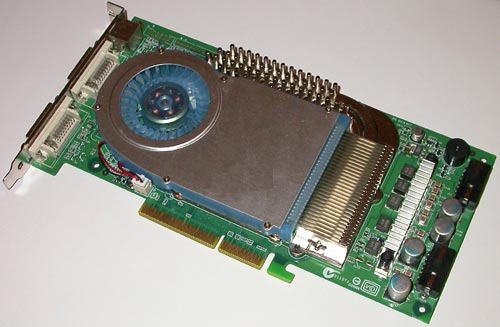
While they are still difficult to find, you simply can't ignore the new generation video cards when building a high-end system. We have found the latest video cards from nVidia and ATI are twice as fast as the previous generation in many benchmarks. We also found in our testing of the new nVidia nForce3-250 chipset that it performs a bit better with an nVidia graphics card. With that in mind, we included a GeForce 6800 Ultra in our High-End system to match the nForce3 Ultra based MSI K8N Neo2.
The 6800 Ultra features 16 pipelines, a GPU at 400MHz, and 256MB of DDR3 memory at 1.1GHz. It is a nice step up from the 12-pipe 6800 and the lower clocked 6800 GT, although either of these 2 cards are still blazing performers - and easier to find. There is also an even faster version of the 6800 family, called the 6800 Ultra Extreme, but as rare as 6800 Ultra cards are right now, we would hesitate to recommend an even rarer card, which is a higher-clocked 6800 Ultra. The best way to see what the 6800 Ultra can do is to read the latest AnandTech Video Card review, which compares ATI X800 XT and nVidia 6800 in both AGP and PCI Express flavors.
Listed below is part of our RealTime pricing engine, which lists the lowest prices available on ATI video cards from many different reputable vendors:
If you cannot find the lowest prices on the products that we've recommended on this page, it's because we don't list some of them in our RealTime pricing engine. Until we do, we suggest that you do an independent search online at the various vendors' web sites. Just pick and choose where you want to buy your products by looking for a vendor located under the "Vendor" heading.
PCI Express Video
PCIe Recommendation: ATI X800 XT Platinum 256MBPrice: $545 Shipped
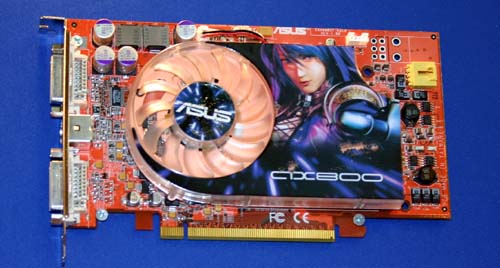
If you are an overclocker looking for top performance on a new Intel 925X board, the X800 XT is the best PCI Express option, particularly if you plan to overclock the system. In all of our reviews of the Intel 925X boards, overclocking requires running the PCIe out of spec, and our tests of the current ATI video cards show that they tolerate out-of-spec PCIe speeds much better than comparable nVidia video cards. This makes the X800 XT Platinum a very good match to our 925X alternative High-End system.
The X800 XT is still hard to find, but it appears that availability is improving and will continue to become less of a problem over time. As we have pointed out in the past, you can choose either the X800 XT or the 6800 Ultra and be perfectly happy and perfectly competitive in the performance area. Therefore, if you don't plan to overclock, then either top-end card will fit your needs very well. However, for overclocking PCI Express, the ATI cards simply survive to higher PCIe overclock levels. If Doom 3 is your game, that might also sway you the other way to the 6800 Ultra, which does perform better in Doom 3 than ATI's top card.
Listed below is part of our RealTime pricing engine, which lists the lowest prices available on ATI video cards from many different reputable vendors:
If you cannot find the lowest prices on the products that we've recommended on this page, it's because we don't list some of them in our RealTime pricing engine. Until we do, we suggest that you do an independent search online at the various vendors' web sites. Just pick and choose where you want to buy your products by looking for a vendor located under the "Vendor" heading.
Monitor
Recommendation: Dell 2001FPPrice: $809 shipped
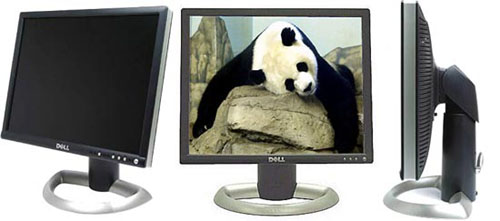
While there is no doubt that CRT monitors still represent the best value and best performance for gaming, things continue to improve rapidly in flat panel technology. In the past few months, prices of some of the very best flat panel monitors have dropped to new lows. In fact, the very fast and large Dell 2001FP is now just $809 direct from Dell - a high-end value that we just couldn't ignore. Dell often runs coupons and specials, so with careful shopping and timing you may be able to purchase the 2001FP for an even better price.
When AnandTech first reviewed the 2001FP with the Dell XPS bundle, our Display Editor was mightily impressed. Nothing has really changed his opinion since then. The Dell 2001FP goes all the way to 1600x1200 resolution on both the analog VGA and Digital connectors. This is a very satisfying resolution for gamers, since many LCDs cannot be coaxed to more than 1280x1024. The Philips LCD also exhibits response times and color resolution that will even keep gamers happy.
LCD measurements are also real - if an LCD is rated 20.1", then that means it is really a 20.1" diagonal. CRTs are rated on the tube size, so a 21" or 22" CRT will actually be a true 19" or 20" diagonal that you can use. That means that the 20.1" Dell is just as large, or a little larger, than our 22" CRT alternative. Given that, the question is whether the fast and large 2001FP is worth the $100 to $145 premium over the excellent Diamondtron 22" CRT that we selected as an alternative. Given the huge space savings and much lower heat, we are inclined to think the difference is now small enough to opt for the flat panel as our high-end recommendation.
If you have a richer budget and want the biggest, useful flat-panel monitor that you can buy, our Display Editor still recommends the Samsung 213T with a 21.3" screen and a new lower $1050 delivered price tag. The Dell has a faster response time, and the Samsung is only 1" larger for the $240 premium, but some of our readers will prefer a brand other than Dell. For them, the Samsung 193P 19" or the 21.3" 213T are both excellent alternatives.
Alternative: Mitsubishi Diamond Pro 2070 22"CRT or NEC FP2141SB 22" CRT
Price: $664 or $709 shipped
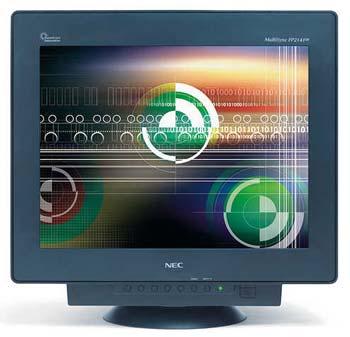
Since NEC and Mitsubishi are now the same company for monitors, these two are really the same superb 22" Diamondtron CRT monitors with different cosmetics. For those not familiar with Diamondtron, it is the name for Mitsubishi's single gun system that is like Sony's Trinitron. Both of these monitors have built enviable reputations for image quality and reliability, and their reputations are well-deserved. To be honest, my main system monitor is also a 22" Diamondtron CRT and it is the best performing monitor that I have ever owned.
The new generations of video cards finally justify a big monitor for high resolutions, and 22" is a great size for high resolution gaming. The NEC/Mitsubishi can deliver resolutions as high as 2048x1536 at the all important 86Hz Refresh and refresh rates as high as 160Hz at 1024x768 and 127Hz at 1280X1024. The important thing with a 22" or 21" monitor is that you can actually see 2048x1536. The only drawback with any large CRT is the space required to house the monitor. If space is a premium, then take a closer look at our flat panel alternative.
If the $624 plus $45 shipping seems a bit steep, then there are a number of 21" monitors based on the Trinitron or Diamondtron CRT that are available in the $400 to $500 range, delivered. If it has been a while since you looked at big CRT prices, we think that you will be surprised by the lower prices you will find today.
If you cannot find the lowest prices on the products that we've recommended on this page, it's because we don't list some of them in our RealTime pricing engine. Until we do, we suggest that you do an independent search online at the various vendors' web sites. Just pick and choose where you want to buy your products by looking for a vendor located under the "Vendor" heading.
Computer Case
Recommendation: Coolermaster Praetorian (PAC-T01-E1) SilverPrice: $114 shipped
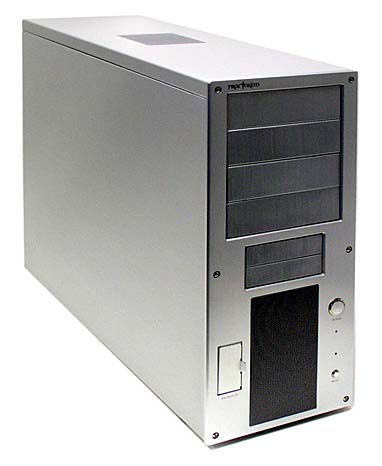
While there are cheaper Coolermaster cases with Aluminum fronts and steel bodies, the Coolermaster All-Aluminum cases are still some of the best for build-quality that you will find anywhere. The Praetorian is a classic Coolermaster Aluminum mid-tower case with 10 drive bays - 4 hidden and 6 front accessible. Coolermaster still includes four additional fans for heat dissipation - 2 front fans, a top fan, and a rear exhaust fan. Due to the popularity of the case, we have also seen a decent $16 price drop in the past month.
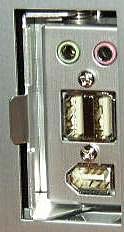
There is also a sliding panel on the front protecting a great selection of essential front ports - 2 USB, firewire, headphone and mic. You will also find a handy removable motherboard tray for easier mounting and the case is a tool-less design for easy assembly. The build quality of the Coolermaster is superb, and the reinforced chassis makes the Praetorian stronger than most aluminum cases.
Power Supply
Recommendation: Antec True Power 480WPrice: $89 shipped
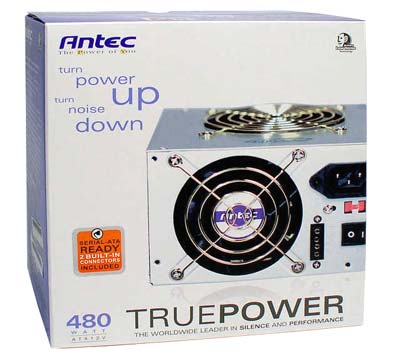
The new high-end video cards have even higher power requirements, so we have "upped" our recommendation a bit to Antec's True Power 480W PSU for $85 shipped. The Antec True Power series provides very consistent power to the rails and has performed very well in AnandTech power supply roundups. It provides extremely stable voltages, a good warranty, quiet operation, low operating temperature, and is a tried and true Power supply. The True Power series, in particular, is one of the most trusted power supplies among enthusiasts. While a good quality 350W or 400W power supply might do the job for processors and video cards just below the high-end, you will have the comfort of some reserve for the ever more power hungry processors and video cards. You will also enjoy rock solid stability with the top FX53 Athlon 64 combined with the power-hungry nVidia 6800 Ultra.
Alternative: Antec 480 watt 120mm fan ATX 12V v2.0 Model 'NeoPower'
Price: $124 shipped
The new Socket T boards include a 24-pin ATX power connector instead of the familiar 20-pin ATX on most current boards. While you can use a 20-pin connection in a pinch, the best choice for a new LGA 775 system is a power supply that complies with the ATX V 2.0 that specifies a 24-pin ATX connector. These power supplies are starting to appear in the market, but are still difficult to find. The Antec V2.0 Neopower is an ATX 2.0 480-watt power supply that provides the best of both worlds - a native 24-pin ATX connector plus a 24-to-20 pin adapter for other boards.
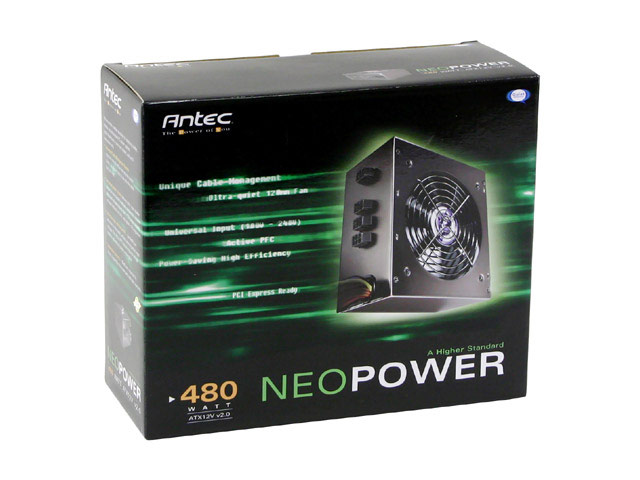
The Neopower 480 also provides customizable power leads to reduce case clutter and has quickly developed a reputation for quiet operation. This makes the Antec a good choice for either a top Athlon 64 system or an LGA 775 P4 system.
If you cannot find the lowest prices on the products that we've recommended on this page, it's because we don't list some of them in our RealTime pricing engine. Until we do, we suggest that you do an independent search online at the various vendors' web sites. Just pick and choose where you want to buy your products by looking for a vendor located under the "Vendor" heading.
Sound Card
Recommendation: M-Audio Revolution 7.1Price: $94
Some tastes run more to sound quality than gaming on the PC and we would recommend the M-Audio Revolution 7.1 for those buyers.
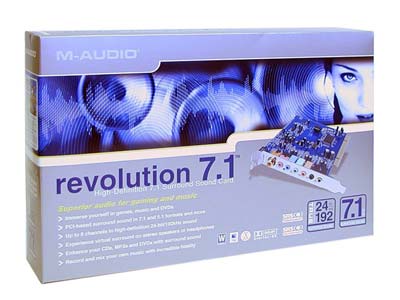
At about the same price as a retail Audigy 2 ZS, the M-Audio brings you the superb Envy 24HT chipset. This is the same family chipset that powers other well-regarded audio cards like the more expensive Terratec, and this is the full-blown 24/192 version. With a S/N ratio of more than 107db, and 24-bit/192kHz payback on all channels, the Revolution 7.1 is a card that will compare well to the best from anyone. The IO capabilities are also stellar, with both 7.1 speaker outputs and coaxial SPDIF. Even the microphone and analog inputs have a very respectable recording specification of 24-bit/96 kHz, and the Analog to Digital S/N, which most cards won't even quote, is a silent 100db.
If your audio goals are even more ambitious in a high end system, M-Audio specializes in cards to satisfy a home studio user. Recommended cards included the M-Audio Audiophile 24/96 with pro-grade A/D converters and a 4-in/4-out gold-plated IO cable for about $150, and the whole Delta line with expanded inputs and outputs up to 10 in and 10 out - and still under $300.
As we've said before, there are people who don't need this kind of audio processing power - even on a high-end system. For those users, we simply suggest that you use your motherboard's onboard sound controller. On-board audio solutions are becoming increasingly capable, with recent on-board chips capable of 7.1 audio and high-definition audio. Some people could care less about their system's sound as long as it supports their applications and there isn't any interference or crackling. If that description fits you to a tee, then use the onboard sound controller and forget about adding an audio card.
Alternative: Creative Labs Sound Blaster Audigy 2 ZS (7.1) retail
Price: $90
While the Sound Blaster Audigy 2 series may not be the best performing audio cards that you can buy, it is hard to argue with their universal compatibility as the standard for sound in computer gaming.
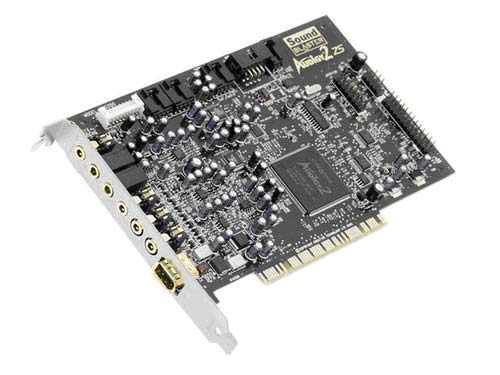
If you're a big gamer, then the top choice for a sound card is the Audigy 2. The Audigy 2 ZS is also a good card for those who love watching Dolby Digital DVD movies, or for someone who just wants decent quality sound. This version of the Audigy 2 supports 8 channels of sound and will deliver a great listening experience in any game, especially ones that support the Audigy 2's special features, like EAX. Simply pair the Audigy 2 with the right set of speakers and you'll have the necessary tools for an exceptional listening experience. Other special Audigy 2 features include 24/96 analog playback and recording, and "add-ons" like FireWire.
The Audigy 2 ZS differs from the regular OEM Audigy 2 mainly in its support of 7.1 channels of sound instead of 6.1. The benefit of going to 7.1 isn't really all that huge, as there's a point that you reach where continually adding more channels yields diminishing returns; that is, your surround sound experience doesn't get a whole lot better going from 6.1 to 7.1 channels, or for that matter, 5.1 to 7.1 channels, depending on how sensitive your ears are. The Audigy 2 ZS is also a retail package instead of OEM, meaning you get additional bundled features, such as video games and a FireWire header.
Speakers
Recommendation: Klipsch Pro Media Ultra 5.1 speakersPrice: $357 shipped
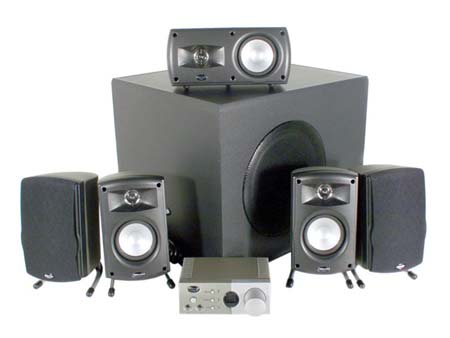
There will probably be some flak with recommending 5.1 speakers with a 7.1 audio card. If you are looking for 7.1 speakers, then neither of our recommended speakers or our alternative recommendation will provide that feature. However, our recommended audio cards will do a wonderful job in powering either of our recommended speaker systems. The Klipsch Pro Media Ultra 5.1 speakers are recommended for one simple reason - they sound better than any other speakers that we have listened to on a computer. When we find 7.1 speakers that sound just as good, they will get our recommendation.
Some computer components become almost legendary, and if you will check out any Forum discussions of speakers, you will find the Klipsch mentioned with reverence. Klipsch is a well-known audiophile speaker manufacturer, but that does not always translate into great performance with powered speakers. The Pro Media 5.1 system works very well, and typical Klipsch, they even quote honest Total Harmonic Distortion in their specifications. Those accustomed to reading specs from a typical set of Asian speakers will not be impressed with 25-20000 +/- 5db for frequency response, or THD specifications of "per Satellite: 60watts/ channel@=‹1% THD,100Hz - 1,000Hz; Subwoofer: 170watts@=‹3% THD, 40Hz - 100Hz". However, audio enthusiasts will likely find the honest ratings and superb sound a refreshing change from the usual hype that goes with computer speakers. The Klipsch also includes a remote control for the speaker system "power box".
Alternative: Creative Labs Megaworks THX Certified 6.1 speakers
Price: $248 shipped
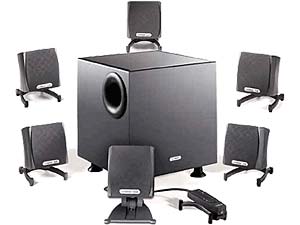
This speaker system provides 6.1 output and is an excellent value at a delivered price of $248. The sound is quite outstanding, but not quite the equal of the more expensive Klipsch Pro Media in our opinion. If you do decide to buy the Creative Megaworks, however, you will not be disappointed, with features and specifications of:
- 6.1 surround sound
- 99 dB signal to noise ratio
- 150W subwoofer
- 70W per satellite and 75W for the center
- Positional audio support.
If you absolutely have to have 7.1 support, then the Creative Gigaworks 7.1 speakers at about $426 (delivered) is available. We haven't auditioned the Gigaworks yet, but it will have to provide something that we have not seen in other 7.1 systems in order to beat the pure performance of the Klipsch Pro Media, which even costs less. No one would believe that there are speakers more expensive than Klipsch, but in this case, there really are more expensive computer speaker systems.
If you cannot find the lowest prices on the products that we've recommended on this page, it's because we don't list some of them in our RealTime pricing engine. Until we do, we suggest that you do an independent search online at the various vendors' web sites. Just pick and choose where you want to buy your products by looking for a vendor located under the "Vendor" heading.
Hard Drives
Recommended: Dual Western Digital Raptor 74GB 10,000RPM SATAPrice: $356 shipped
As Anand found in his first review with the new storage benchmarking system, there is Western Digital Raptor and there is everything else. It is hard to argue with the choice of the top Raptor drives in a system geared to get the most possible from your computer.
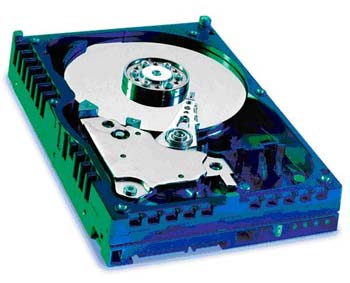
The problem with the top Raptor drives is that they are still relatively small as hard drives go, so we are recommending two drives in a RAID 0, RAID 1, JBOD, or just plain 2-drive setup. Anand has shown that there is little performance advantage to RAID 0, but striping is still useful for improving boot times. It can improve performance in multi-tasking situations, which are admittedly rare on the desktop. RAID 1, on the other hand, is useful in protecting against hard drive failure, which is always a risk when pushing a system to its limits with overclockers. Frankly, many overclockers keep a second hard drive with known good images to restore hard drives that end up in data corruption in overclocking attempts, which is another great use for the second Raptor hard drive.
The storage capacity for two 74GB WD Raptor drives is a rational 148GB of fast access storage. Compared to SCSI RAID solutions with similar performance, the 2 Raptors are a virtual bargain. The 74GB Raptors have double the storage of the legendary 36.7GB Raptors, an increase in speed, and the same 8MB buffer. We are also pleased to see a price drop in the 74GB Raptors of almost $20 for the pair this month.
The 5-year warranty for the Raptor drives makes this investment in high-speed storage a little easier to handle. All Drives will fail at some point because they have moving parts, but you have warranty reassurance for 5 years that attest to the quality of these WD Raptor hard drives. Previously, 10,000RPM speeds or a 5-year warranty were features only found on enterprise/SCSI drives, but they have now reached our high-end system desktop.
Alternative: Seagate ST3200822AS (200GB) Baracuda SATA 7200RPM (8MB cache)
Price: $129 shipped
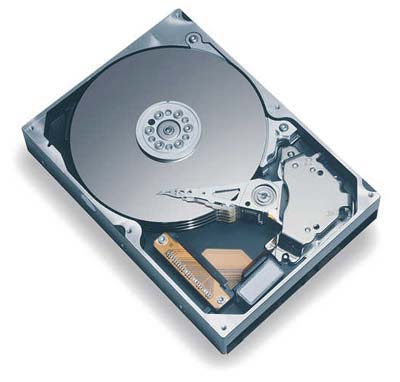
While 7200RPM drives, including our alternative Seagate Barracuda 200GB SATA, are not as fast as the Western Digital Raptor 10,000RPM SATA drives, they are still plenty fast for most applications. Seagate offers the same 8MB cache as the Raptor drives and very large 200GB storage capacity for a small $130 price. While the well-known Seagate drives offer impressive specifications, the most important feature of the Seagate 200GB is not something that you can see. With some hard drive manufacturers reducing warranties to one year, the Seagate 200GB now carries a 5-year manufacturers warranty.
If 200GB seems a massive amount of storage, it will be just what the doctor ordered for users of Digital Cameras, Digital Video, and digital music storage. With this Seagate delivering hard drive capacities at about 65 cents per Gigabyte, this drive also delivers excellent value.
We have moved our alternative recommendation from IDE to SATA for the simple reason that the new Intel 925X/915 chipset only provided one IDE connector for 2 devices, but 4 SATA connectors. If you plan to use the alternative drive selection for the Athlon 64 system, you can choose the same Seagate as an IDE model for just $119 including shipping.
We see no real reason to recommend a SATA drive over IDE unless there are features like speed or RAID or NCQ or connectors that make the SATA a better choice. There is also no reason not to choose SATA if you prefer the narrow cables, but please keep in mind that SATA connectors are still very fragile and more easily broken than the admittedly bulky, but durable, IDE connector.
Optical
Recommendation: Pioneer 108D 16X Dual Layer DVD+/-RWPrice: $97 shipped
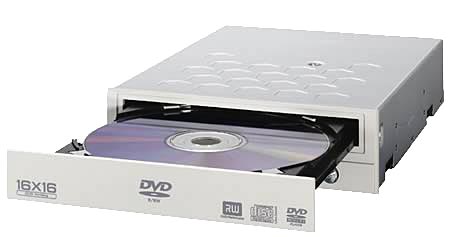
The Pioneer 108D has become the new favorite at AnandTech as you will see in our upcoming review. Sporting 16X DVD + or - burn speeds, 4X Dual-Layer burn capabilities, and 4X DVD+/-RW writing, the 108D is certainly impressive on paper. It was just as impressive in the flesh, managing to take many of the test media to new high speeds in reliable writing. At just under $100, this is a truly remarkable DVD writer and an incredible value compared to the top DVD burners of just a few months ago.
While we have not yet tested the NEC 3500A, it is an almost identical drive with similar specs based on the same technology. The NEC does support slightly faster CD burn/read times (48X/48X vs 32X/40X) and it also supports bit-setting for those looking for that feature. If the NEC performs as well in our burn tests as the Pioneer performed, it will become our recommended drive at a price that is a few dollars cheaper.
Listed below is part of our RealTime pricing engine, which lists the lowest prices available on storage from many different reputable vendors:
If you cannot find the lowest prices on the products that we've recommended on this page, it's because we don't list some of them in our RealTime pricing engine. Until we do, we suggest that you do an independent search online at the various vendors' web sites. Just pick and choose where you want to buy your products by looking for a vendor located under the "Vendor" heading.
Networking
Recommendation: Onboard networkingPrice: $0
The two onboard Gigabit ports that you will find on our recommended motherboard is all that you will need for a high end system. One of the gigabit LAN ports on the MSI K8N Neo2 is the on-chip nVidia gigabit LAN that removes at least one of the Gigabit LAN options from the PCI bus. Our Intel alternative, Asus P5AD2, also moves the LAN off the confines of the PCI bus and onto the much faster PCI Express bus. In fact, both gigabit LAN ports on the Asus are of the fast PCIe variety. This makes both recommended motherboards capable of the best performance that you can achieve with Gigabit LAN - with no confines of a PCI bus. The practical reality is that you will likely find no real difference in the Gigabit LAN provided by either MSI or Asus unless you have specialized networking needs. Broadband won't be any faster than the 10/100 solution found on almost any motherboard these days, but on-chip Gigabit can be useful when transferring large amounts of data to and from multiple networked computers in an office or within a home network.
Keyboard and Mouse
While not a major item, it's still important that you purchase the right keyboard and mouse. Reality is that different people have different preferences for a keyboard's feel and look, and the same goes for a mouse. Therefore, we suggest that you personally try out a keyboard and mouse. To recommend purchasing these items online is misleading, as there are too many users with different preferences for this type of thing. Visit your nearest PC outlet to try out a keyboard and mouse; a PC Club, Best Buy, CompUSA, or Circuit City store will do. We suggest that you start with Microsoft and Logitech keyboards and mice. Make sure you also check out optical mice from these manufacturers as well. A good solid optical mouse from either should run about $20, but in some cases, can run as little as $10 if you can find the right deal.There are also some great wireless optical mice out there, but it really depends on whether you care at all about a wireless mouse and are willing to spend the money to acquire it. It is also no value to buy a cheaper wireless mouse or keyboard just to find that you hate the feel of it. Wired or wireless, make sure you like to type on the keyboard or like the feel of the mouse before you buy it. Most will be satisfied with a standard optical mouse from Microsoft or Logitech for gaming, as it offers similar or better precision and feel compared to most wireless mice. Whichever you decide to get - wired or wireless - stick with what makes you most comfortable. It is no fun to fight a keyboard or mouse that you hate every time you use your computer
If you cannot find the lowest prices on the products that we've recommended on this page, it's because we don't list some of them in our RealTime pricing engine. Until we do, we suggest that you do an independent search online at the various vendors' web sites. Just pick and choose where you want to buy your products by looking for a vendor located under the "Vendor" heading.
Recommended High-End System
| Hardware | Component | Price |
| CPU & Cooling | AMD Athlon 64 FX53 Socket 939 Retail | $829 |
| Motherboard | MSI K8N Neo2 (nForce3 Ultra) Socket 939 | $145 |
| Memory | 1GB (2 X 512MB) Crucial Ballistix PC3200 | $278 |
| Video Card | 256MB NVidia 6800 Ultra | $526 |
| Monitor | Dell 2001FP 20.1" Flat Panel | $809 |
| Computer Case | Coolermaster Praetorian (PAC-T01-E1) Silver plus 480W Antec True Power PSU |
$203 |
| Sound Card | M-Audio Revolution 7.1 | $94 |
| Speakers | Klipsch Pro Media Ultra 5.1 | $357 |
| Networking | Onboard 10/100/1000 Ethernet | $0 |
| Hard Drive | 2x74GB Western Digital 74GB Raptor 10,000RPM SATA RAID (148GB Total) | $356 |
| DVD/CD-RW | Pioneer 108D 16X DVD+/-RW Dual Layer | $97 |
| Bottom Line | $3597 | |
$3597 is the final price of our recommended Athlon 64 high end system for September, not including any money that you'll spend on software (Windows XP Professional or Home, Office, Photoshop, etc.) or a keyboard and mouse. This is a few dollars less than our last High End Buyer's Guide recommendation, even though we have significantly upgraded some components. Our monitor is now a fast 20.1" flat panel. The optical drive has been upgraded to a 16X Dual-Layer burner that can handle both + and - media at 16X write speeds. The audio card is now an M-Audio card based on the VIA Envy 24T audio chip. Many of you have suggested that we choose the best in these areas and we are happy to accommodate you. We have also updated memory recommendations based on the latest benchmarking at AnandTech.
$3600 is not pocket change, but we do believe that you will get a heck of a high end system for this $3600!! We've included the latest High End video from nVidia and the top Socket 939 Dual-Channel chipset from nVidia that is a particularly good match to an nVidia video card. The system also includes one of the fastest and most visually-pleasing flat panel displays tested at AnandTech in a large and satisfying 20.1" display. There are also CRT options at a lower price for those who prefer a CRT monitor, in addition to the $1050 21.3" flat-panel. You can spend a bit more at every price point, but we really don't believe that you will gain much, if anything, in performance.
Alternative High End System
Almost every recommendation in our alternative system is new, since we are now recommending an Intel 560 (3.6Ghz) on a new 925X motherboard as an alternative. The new Intel LGA 775 requires PCI Express, DDR2, and a 24-pin connector Power Supply in addition to the new processor, so parts are not generally interchangeable with the Recommended System.| Hardware | Component | Price |
| CPU & Cooling | Intel 560 (3.6Ghz) LGA 775 | $505 |
| Motherboard | Asus P5AD2 premium | $264 |
| Memory | 1GB (2 X 512MB) Crucial DDR2-533 | $362 |
| Video Card | 256MB ATI X800 XT Platinum | $545 |
| Monitor | Dell 2001FP 20.1" Flat Panel | $809 |
| Computer Case | Coolermaster Praetorian (PAC-T01-E1) Silver plus 480W Antec ATX v2.0 'NeoPower' PSU |
$248 |
| Sound Card | M-Audio Revolution 7.1 | $94 |
| Speakers | Klipsch Pro Media Ultra 5.1 | $357 |
| Networking | Onboard 10/100/1000 Ethernet | $0 |
| Hard Drive | 2x74GB Western Digital 74GB Raptor 10,000RPM SATA RAID (148GB Total) | $356 |
| DVD/CD-RW | Pioneer 108D 16X DVD+/-RW Dual Layer | $97 |
| Bottom Line | $3637 | |
Our Intel alternative system based on the new Socket T/DDR2/PCIe options totals about the same as our top-performing Athlon 64 system. The advantage of the cheaper Intel 560 is offset by the requirement for more expensive DDR2 memory, a more expensive motherboard, and an ATX 2.0 power supply. Where they are interchangeable, we have used the same parts recommended for the Athlon 64 system to provide a better comparison of the true cost of a top LGA 775 system vs. an Athlon 64 system.
By carefully choosing components from our alternative suggestions, you can reduce the price of either high end system to about $3000. The biggest savings would come with the alternative 200GB 7200RPM hard drive and the Mitsubishi 22" CRT instead of the fast 20.1" flat panel. Those two alternatives alone would reduce the total by almost $400. With the excellent on-board sound solutions provided by the motherboards - the 7.1 channel Realtek ALC850 on the A64 and Intel High Definition Audio on the Asus 775 - you can also reduce costs another $200 by using on-board sound and the alternative speaker system. Sound will still be outstanding and very satisfying for most end-users.
There are lots of changes in this High End Buyer's Guide. Take a close look at the complete High End Socket 939 FX53 system and the alternative Socket 775 Intel 560 system. Then, sharpen your pencil and start shopping for your dream high end system.
Please let us know what you think in the comments section at the bottom of each page. Your comments are always welcome, good and bad, and they help us refine our Buyer's Guides for the future.







